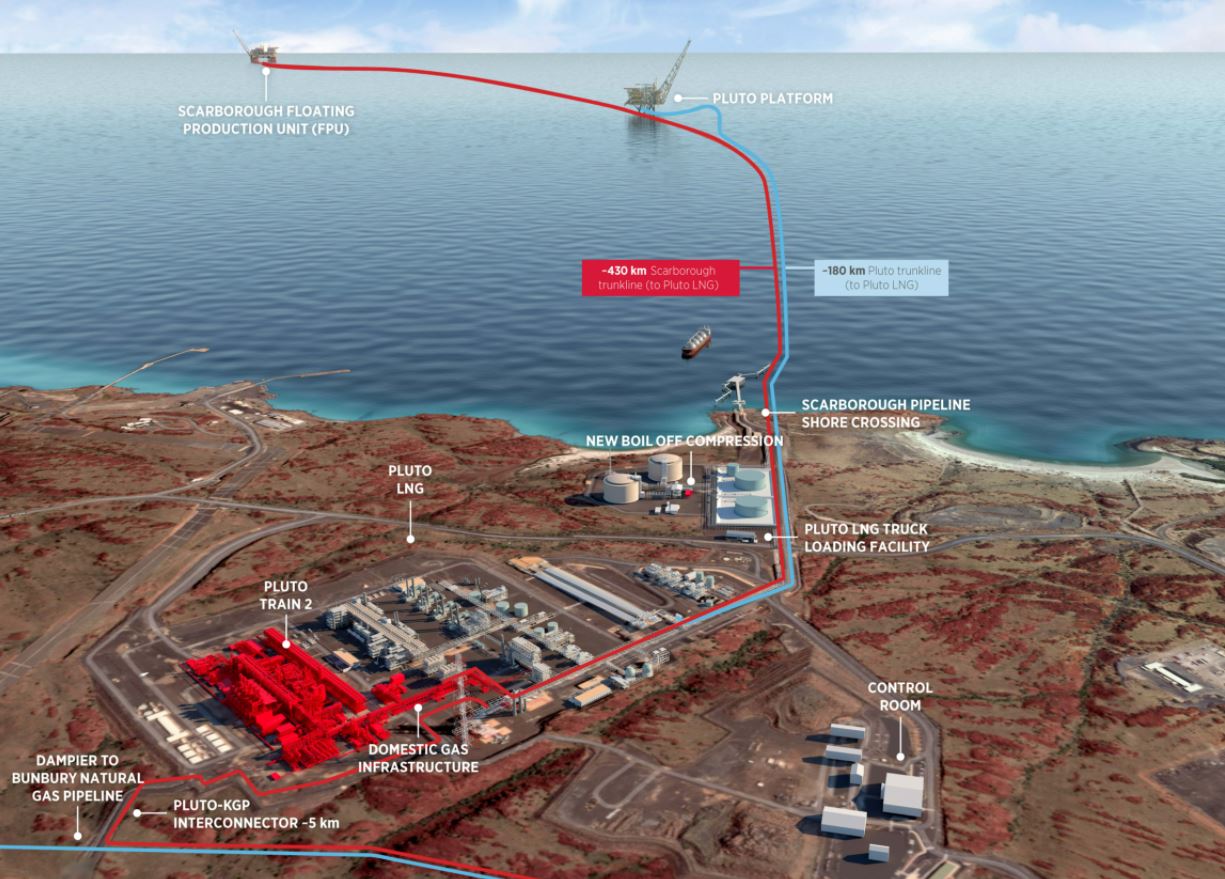Australia’s Woodside and its partner BHP are moving forward with plans to develop the Scarborough offshore gas field that would feed the second Pluto LNG train.
The Scarborough JV has received offers for the grant of petroleum production licences in respect of the WA-1-R and WA-62-R titles from the Commonwealth and Western Australian Joint Authority.
This follows a deal reached between Woodside and BHP in February to align their participating interests across the two titles.
The agreement resulted in Woodside holding a 73.5% interest and BHP holding a 26.5% interest in each title.
Woodside CEO Peter Coleman said the JV intends to accept the licences, demonstrating their strong commitment to taking the project forward.
“The impacts of Covid-19 and the ensuing volatility in market and investment conditions have provided us with an opportunity to review options for the Scarborough development, allowing us to improve execution certainty and increase the value of this world-class resource.
“With production licences and the offshore project proposal environmental approval in place, Woodside will have secured the key primary Commonwealth approvals required to support a final investment decision,” he said.
Final investment decision next year?
Following acceptance, the JV will advance its application for a pipeline licence and submission of the field development plan to the WA authority.
According to Woodside, the venture targets a final investment decision in the second half of 2021.
Earlier this year, the National Offshore Petroleum Safety and Environmental Management Authority accepted the Scarborough offshore project proposal.
Woodside also submitted retention lease renewal applications in respect of the WA-61-R and WA-63-R titles for the Thebe and Jupiter fields.
These fields are also part of Scarborough while the applications are still under assessment.
The Scarborough gas resource is located in the Carnarvon Basin, about 375 km west/north-west of the Burrup Peninsula in Western Australia.
Furthermore, the field contains an estimated contingent resource (2C) dry gas volume of 11.1 Tcf.

